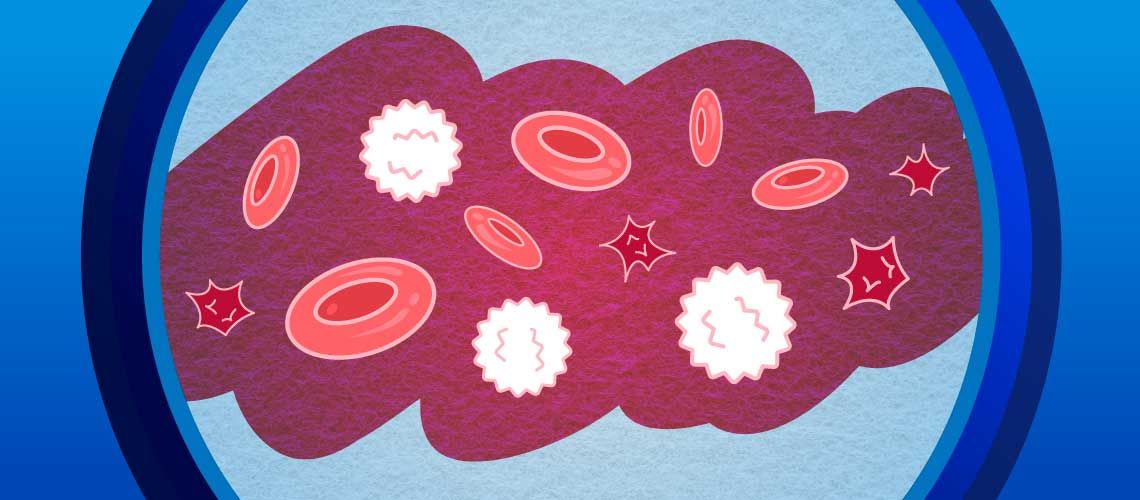

How Blood and Platelet Morphology Strengthens Clinical Decision-Making
Modern veterinary diagnostics, like automated hematology analyzers, provide quick and standardized cell counts. This automation has a host of benefits, including rapid results for pre-anesthetic screening and same-day diagnostics for ill patients. However, there are limitations with these processes—especially when it comes to detecting abnormalities.
Blood morphology and platelet review, including the manual evaluation of stained smears, remain essential. Morphologic examination offers crucial insights into cell type, size, shape, and structural abnormalitiesof red blood cells, white blood cells, and platelets.
Knowing when and why to review blood morphology enhances diagnostic accuracy, ensures reliable platelet assessment, and supports early detection of hematologic diseases. Below, we'll explore the fundamentals of blood morphology, focusing on the importance of detecting abnormalities and how new technologies facilitate this testing.
Understanding the Fundamentals of Blood Morphology
Blood morphology and platelet analysis conventionally involve a systematic review of stained blood smears under light microscopy. More recently, cytology platforms have made possible the digital submission of blood smears to clinical pathologists for manual review as the automated analysis of blood smears at the point of care. The newest technology has eliminated the process of making and staining a blood smear altogether, enabling the automated analysis of blood morphology in a liquid environment in an in-clinic analyzer.
White blood cells are classified into neutrophils, lymphocytes, monocytes, eosinophils, and basophils, with subclassifications based on maturity and abnormal appearance. Red blood cells are examined for anisocytosis, poikilocytosis, polychromasia, and inclusions, like Heinz bodies or parasites.²
This qualitative information finishes the story that began in CBC by such functions as differentiating reactive lymphocytes from atypical cells. Blood morphology also provides an extra level of validation for the automated CBC report. This thorough comprehensive hematology testing can also lead to early intervention and disease detection.

Platelet Assessments and Clumping
Platelet evaluation is a common reason for blood smear review. Automated CBC analyzers provide reliable platelet counts in most cases, but certain factors such as platelet clumping can interfere with platelet counts. Especially in feline samples, clumping may even create pseudothrombocytopenia (falsely low counts).³
Blood smear review complements the CBC by confirming platelet numbers and identifying features such as giant platelets that may signal increased marrow production and enabling platelet assessments that account for platelet clumps that usually indicate adequate platelets. This prevents misdiagnosis of conditions like immune-mediated thrombocytopenia.
Blood morphology also enhances the diagnostic value of the CBC, particularly when automated CBC results are flagged as abnormal. Today's new automated hematology analyzers bring automation to blood morphology, providing platelet estimates that include counting of platelets in clumps and extending the power of automated hematology into areas where manual review was once required.
Diagnosing and Identifying Hematologic Abnormalities
Blood smear review is crucial for identifying hematologic abnormalities, which are typically only found upon microscopic examination of blood morphology and platelets.
Common examples related to red blood cell findings include:
- Spherocytes: Most commonly indicative of immune-mediated hemolytic anemia.
- Schistocytes: Can be associated with hemangiosarcoma among other disease states that cause RBC fragmentation.
- Heinz bodies: Typically result from oxidative damage.
Common examples of white blood cell abnormalities include:
- Left shift and toxic neutrophils: Indicate severe inflammation or sepsis.
- Atypical lymphocytes: May suggest neoplasia or reaction to an antigenic stimulus.
Finally, abnormal platelet findings, such as macrothrombocytes or hypogranulated forms, provide insight into marrow activity and systemic disease.²
Technology and Advancements for Improved Outcomes
Recent advancements in technology have made morphology more accessible for veterinary practices. New automated hematology platforms are capable of capturing high-resolution images and AI-assisted classifications to provide the most comprehensive hematology results available.
These tools reduce interobserver variability and enhance diagnostic efficiency. Studies have shown that analysis enhanced by AI improves the recognition of subtle abnormalities, leading to more accurate and timely diagnoses.4-10
Thorough Screening Boosts Clinical Decision-Making Value
Automated comments additionally provide an interpretive layer to the numerical hematology data. For example, interpretive comments regarding reticulocytes point toward their clinical significance in cases of anemia or when present in increased numbers in the absence of anemia. In patients with anemia, blood morphology helps to distinguish between regenerative and non-regenerative patterns, guiding further investigations, such as bone marrow aspiration. Similarly, detecting immature neutrophils in septic patients can inform immediate treatment strategies in high-stakes situations.
Ultimately, morphology enhances clinical confidence and leads to better patient outcomes.
Blood Morphology Detects Nuance with Precision
Blood morphology is essential in veterinary hematology. While automated tools offer speed and efficiency, morphology reveals nuances that automate CBC analyzers often cannot decipher alone.
From confirming platelet counts to identifying subtle cell changes, morphology ensures more accurate diagnoses. Automated blood morphology analysis, made possible by artificial intelligence, enables uncovering of important hematology information easier and more standardized than ever. For veterinarians, combining quantitative analyzer data with qualitative morphology results in precise, efficient, and clinically valuable diagnostics.
References
- Harr, K. E., Flatland, B., Nabity, M., & Freeman, K. P. (2019). ASVCP guidelines: Complete blood count in veterinary species—Update. Veterinary Clinical Pathology, 48(1), 9–28.
- Stockham, S. L., & Scott, M. A. (2019). Fundamentals of Veterinary Clinical Pathology (2nd ed., updated ed.). Wiley-Blackwell.
- Moritz, A., & Becker, M. (2020). Platelet evaluation in small animals: Advances in detection of clumping and true thrombocytopenia. Journal of Veterinary Diagnostic Investigation, 32(6), 853–861.
- Chung J, Ou X, Kulkarni RP, et al. Counting White Blood Cells from a Blood Smear Using Fourier Ptychographic Microscopy. Del Alamo JC, ed. PLoS ONE 2015;10:e0133489.
- Gulati G, Uppal G, Florea AD, et al. Detection of Platelet Clumps on Peripheral Blood Smears by CellaVision DM96 System and Microscopic Review. Lab Med 2014;45:368–371.
- Bachar N, Benbassat D, Brailovsky D, et al. An artificial intelligence‐assisted diagnostic platform for rapid near‐patient hematology. American J Hematol 2021;96:1264–1274.
- De Almeida JG, Gudgin E, Besser M, et al. Computational analysis of peripheral blood smears detects disease-associated cytomorphologies. Nat Commun 2023;14:4378.
- Riedl JA, Stouten K, Ceelie H, et al. Interlaboratory Reproducibility of Blood Morphology Using the Digital Microscope. SLAS Technology 2015;20:670–675.
- Rosetti M, De La Salle B, Farneti G, et al. The added value of digital morphological analysis in the evaluation of peripheral blood films: the report of an UKNEQAS external quality assessment sample. Ann Hematol 2022;101:729–730.
- Hutchinson C, Brereton M, Adams J, et al. The Use and Effectiveness of an Online Diagnostic Support System for Blood Film Interpretation: Comparative Observational Study. J Med Internet Res 2021;23:e20815.





